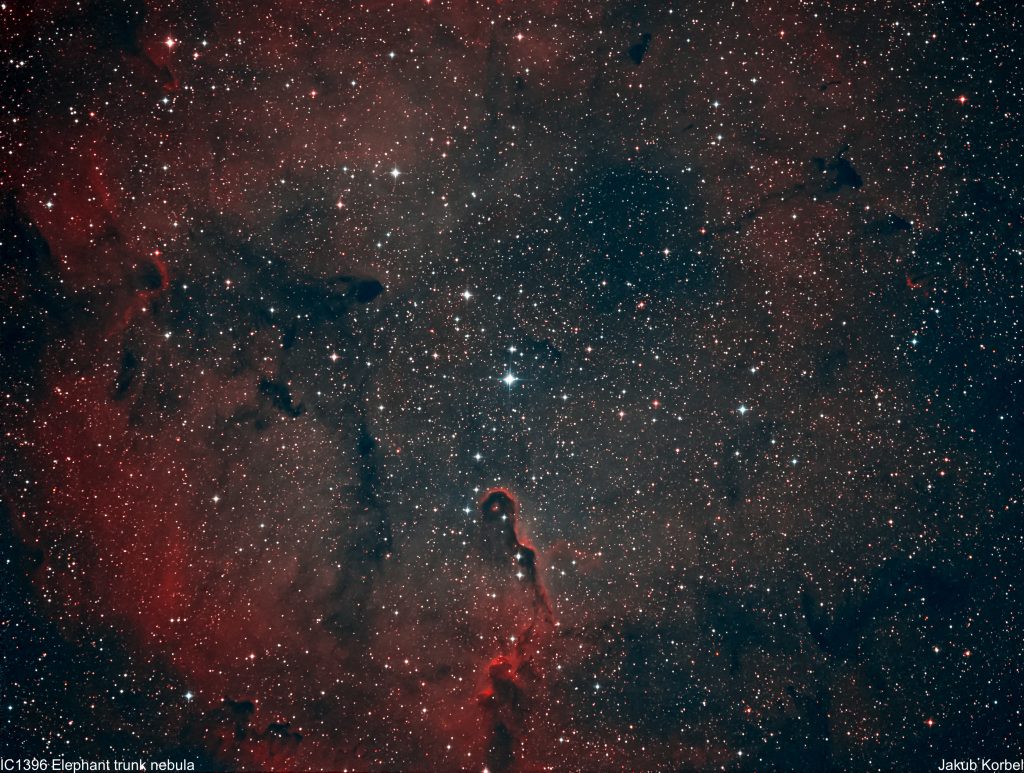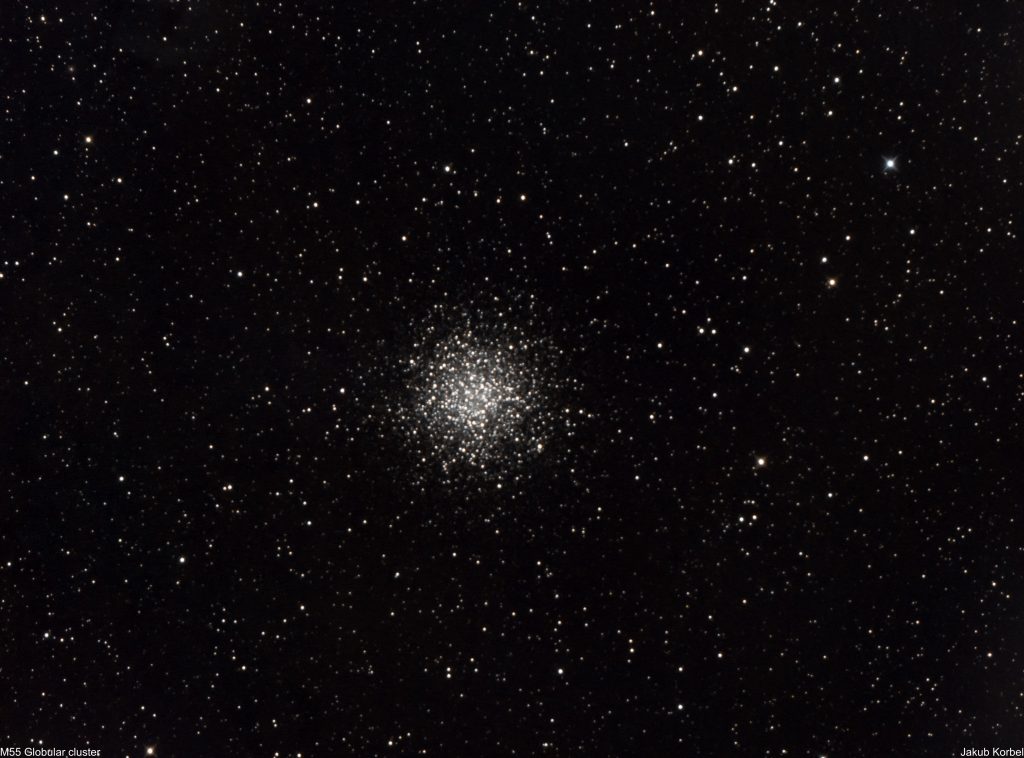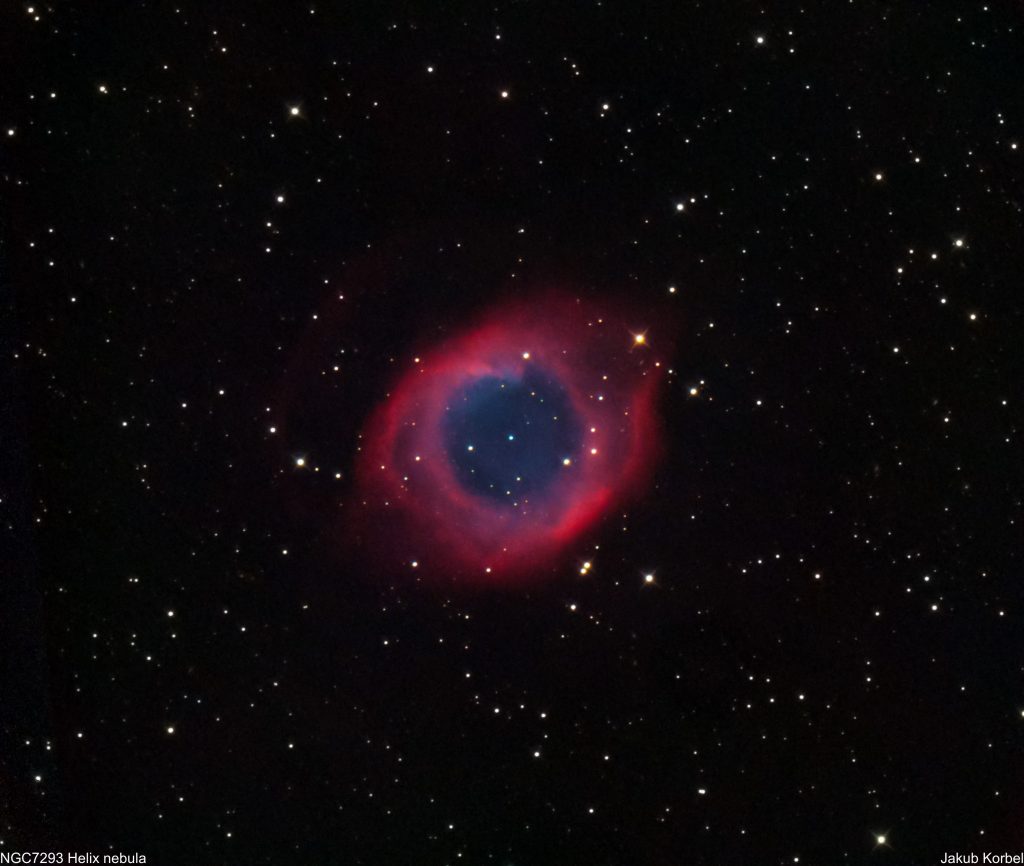Elephant trunk nebula is visually one of the biggest deep space objects in the sky. It covers more than 6 times the diameter of the Moon. I had to use the telescope with the shortest focal length and use focal reducer ASA 0.73. Recently, I managed to improve the picture quality of this reducer by adjustment of the tilt. The nebula can be located in constellation Cepheus, but it cannot be spotted visually because it’s very dim.
I spent 4 nights capturing these photos. In total, there is nearly 19 hours of exposure time. Probably this is my longest integration time I have ever made. The first picture is in fake Hubble colors, second one in more or less visible spectrum colors.
Technical details
| Telescope: | Newton 150/600 mm |
| Aperture: | 150 mm |
| Focal length: | 438 mm |
| Mount | Gemini G53f |
| Autoguiding | Orion Mini Autoguider |
| Camera: | Moravian instruments G2 8300M @-30C |
| Corrector: | ASA 0.73 reducer |
| Filters: | Baader narrow band |
| Exposure:8x | 125xHa, 125xOIII, 125xSII 180 s, bin 1x1, |
| Date: | 2017-10-17 |





